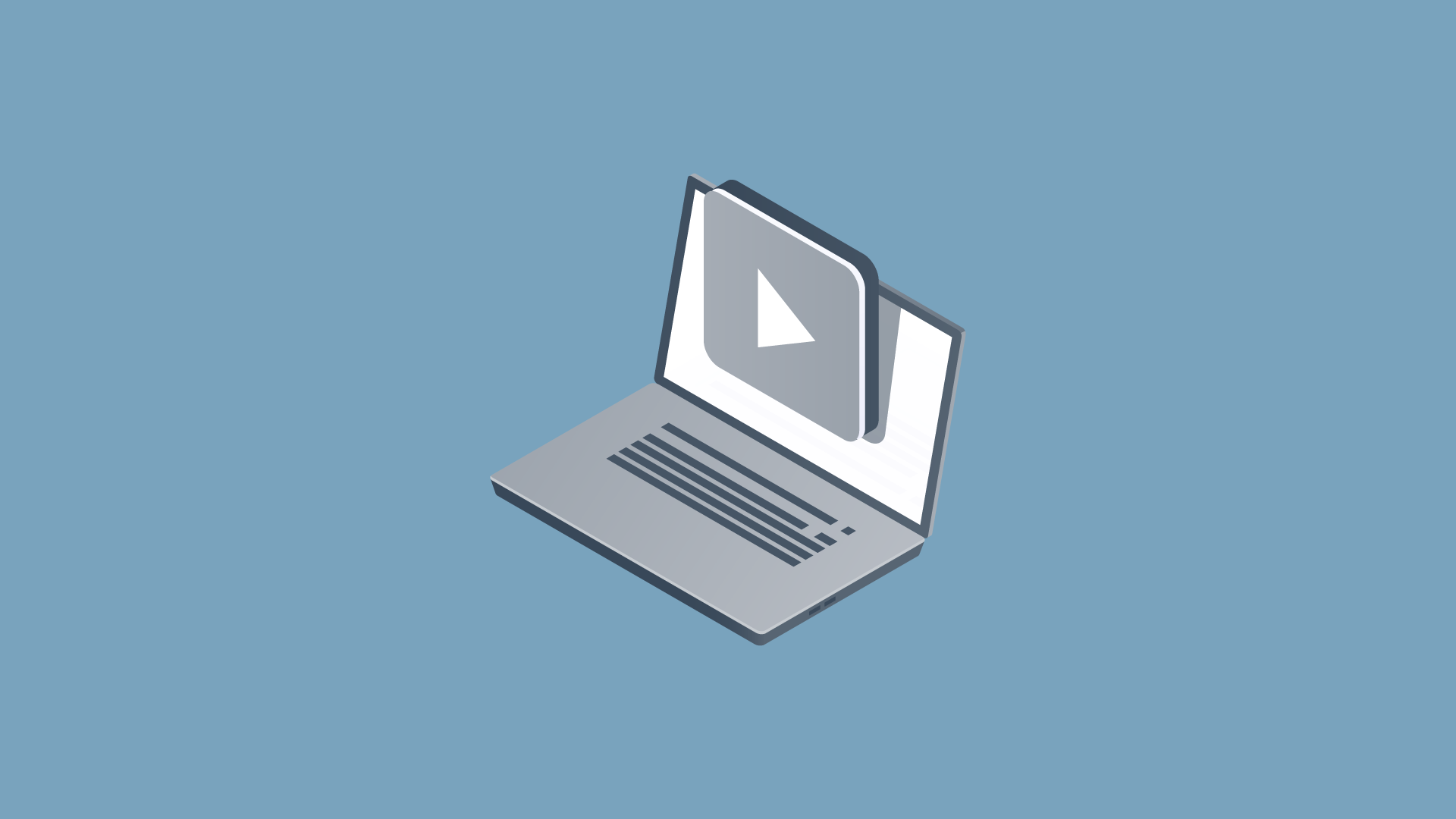Are you struggling to generate leads for your business? Do you feel like you're doing everything right, yet still not seeing the results you want? It's time to take a closer look at your demand generation strategy.
Demand generation is the process of creating and nurturing interest in your product or service. It's a crucial part of any successful marketing campaign, but it's not always easy to get it right. With so many channels and tactics available, it's easy to get overwhelmed and lose focus.
If you want to see real results from your demand generation efforts, you need to learn from the best.
In this article, we'll take a look at some real-life examples of demand generation in action. So, whether you're a seasoned marketer or just starting, get ready to take your demand generation to the next level.
| Demand Generation |
What is a Demand Generation Campaign?
A demand generation campaign is a marketing strategy that utilizes data and aims to create awareness and interest in a company's products or services.
The strategy involves delivering content and engaging in conversations with customers at every stage of their journey. It is important to consider all touchpoints in a demand generation campaign.
To develop a successful demand generation strategy, it is necessary to comprehend the demand generation funnel.
Real-World Demand Generation Campaign Examples
Get ready to unleash the power of demand-gen tactics in the real world! Let's dive in and explore the endless possibilities. Here are what you can try today:
1. Develop Valuable Content
Creating educational content is a key component of successful B2B marketing. By sharing your expertise and offering valuable resources, you can attract new prospects and build interest in your brand.
Whether you provide whitepapers, webinars, or other types of content, make sure it offers real value to your target audience.
Studies show that educational content can increase the likelihood of purchase by up to 131%. So, invest in creating high-quality content that educates and informs your prospects, and watch your demand generation efforts pay off.
2. Make Your Content Interactive
Creating interactive content is a powerful way to engage with your target audience and drive traffic to your website. In industries where customers frequently use formulas or calculations, providing an online tool to perform these functions can be a valuable resource for your audience.
By incorporating this approach into your website, you can keep visitors engaged and returning for more. Over time, these repeat visitors may be more likely to convert into customers. This strategy can be effective for industries such as real estate, finance, and home remodelling.
To create effective interactive content, it is crucial to understand your audience's needs and challenges. Develop a tool or resource that can address these challenges, and make sure it is easy to use and accessible on your website.
According to research by Upland Software, interactive content has been shown to increase engagement rates by up to 2x compared to static content.
Given this, it's no surprise that 62% of B2B marketers use interactive content as part of their overall marketing strategy. By leveraging the power of interactive content, you can engage your audience, drive traffic to your website, and ultimately, increase your chances of acquiring new customers.
3. Offer Free Trials
The word “free” is a powerful attention grabber. People are often willing to try anything once if it doesn't cost them a dime. Consider offering a free service or a free trial of your product for 14 to 30 days to potential customers.
Encourage them to provide feedback so that you can understand why they did or didn't convert into paying customers.
According to one report, B2B companies that use free trials see an average of 66% in conversions. This is good news if you're worried that giving away free things might be counterproductive.
It can help your prospects understand how your product or service works and the value it can offer. And if they find it helpful, they'll be more likely to convert into a paying customer in the future.
4. Send Corporate Gifts
Corporate gifting is a powerful way to drive demand for your product or service. When done effectively, it can potentially generate a return on investment of over 200%.
You can send an assortment of gifts, including wine, cookies, fruit baskets, candle kits, company memorabilia, and more. When you send gifts to prospective customers, it can entice them to reach out, and you can use this as an opportunity to book calls and meetings.
Corporate gifting also creates a good first impression, increasing the odds of your brand is remembered. Look for clues on which gifts would appeal to a prospect, which you can learn through conversations on social media or the phone.
There are gift-sending platforms available to track your corporate gifting campaigns. Use this to monitor who converts and who doesn't. Keep in mind that the goal is not just to give away gifts but to build a relationship with prospects. Personalize the gifts based on their interests, preferences, or challenges to make a lasting impact.
Also, be mindful of the budget you set for corporate gifting. Calculate the potential ROI and balance it with the cost of the gift. The key is to be strategic and thoughtful, so the gifts create a positive impression on the recipient and ultimately drive demand for your business.
5. Guest Blog Posts
Publishing content on your website may not always get the attention it deserves, especially if your website is not well-known. To address this issue, you can tap into the audience of blogs that already have a significant following.
One effective way is to find an influencer in your industry and invite them to write a guest blog post. By doing so, their audience will discover your brand and potentially become interested in your products or services.
Moreover, you can benefit from the influencer's social media following. They may share your guest post on their profile, expanding your reach and attracting new visitors to your website.
According to brands, guest posting can increase the number of new visitors and convert them into leads.
For instance, Okdork.com saw a 73% increase in views from new visitors within two days. Similarly, BufferApp leveraged guest blogging to acquire 100,000 customers in just nine months.
6. Use Personalized Email Campaigns
Personalization has become more than just a buzzword in recent times. It is a proven strategy that B2B marketers are utilizing to connect with their target audience. People today crave relevant content, even in marketing messages from brands.
One effective way of implementing personalization is through email campaigns. Nike is a great example of a brand that uses email marketing to build personal connections with engaged customers. They ask for your gender when you sign up for their newsletter to send relevant content.
For instance, they showcase and offer promotions for products that you like.
Personalizing email subject lines can increase open rates by 50%, according to Oberlo. This is a significant boost that can lead to more conversions. So, take the time to segment your email list and craft personalized messages that resonate with each group.
This will help your brand stand out in a sea of generic emails and establish a deeper connection with your audience.
7. Create Fun Quizzes
Contrary to popular belief, quizzes are not limited to B2C audiences. They are an effective tool to attract and engage B2B buyers as well. For example, consider creating quizzes such as 'How to Determine if You Need New PM Software' or 'Test Your Knowledge on Topic X.'
Interactive quizzes serve a dual purpose. First, they assist your audience in identifying a problem or discovering a solution while simultaneously providing entertainment. Second, they offer valuable insights into your target market, as you can collect valuable data regarding the needs and preferences of potential customers.
As an added benefit, engaging quizzes also contribute to raising brand awareness. For instance, Outgrow successfully utilized a whisky-themed quiz to help one of its clients generate a whopping 53,000 leads.
By investing in creating and promoting entertaining and informative quizzes, your brand can effectively reach and captivate a B2B audience.
8. Encourage User Generated Content
To generate demand for your brand, you don't always have to carry the entire burden yourself. Engaging your audience to contribute and create buzz around your brand can be a highly effective approach, and social media platforms are ideal for facilitating this process.
For instance, consider inviting your followers to share photos of their workspace or favourite software tools. To boost engagement further, offer incentives such as coupons or the chance to win a prize for participation. If possible, encourage users to share their experiences with your product or service, which will add even more value to the user-generated content.
This strategy not only fosters a sense of community and involvement among your audience but also serves as social proof for your brand. Showcasing the positive experiences of real users can significantly enhance your brand's credibility and appeal, ultimately strengthening your brand's reputation and reach.
9. Implementing a Lead Scoring System
Demand generation entails more than just generating a high number of leads for your brand. It's also crucial to improve the quality of those leads. Implementing a lead scoring system can be instrumental in determining whether your leads are of adequate quality for your sales team to close deals successfully.
Lead scoring evaluates prospects based on their historical behaviour and interactions with your brand. This analysis helps identify individuals who demonstrate significant interest and can be considered 'hot' leads for your sales team.
Factors such as the specific pages viewed on your site expressed interest in demos or product trials, and the prospect's stage in the sales funnel (e.g., discovery versus consideration) are taken into account in this process. Lead scoring can also assess a prospect's organizational role and seniority, shedding light on their decision-making responsibilities.
However, implementing a lead scoring system may not be suitable for every brand. If you are still struggling to generate a sufficient number of leads for your sales team, it might be premature to focus on lead scoring. But for brands aiming to elevate their demand-generation strategies, considering a lead scoring system could provide significant benefits.
10. Host a Webinar
Virtual events have gained immense popularity in recent times, particularly due to the increased reliance on remote work and communication. Webinars have emerged as an invaluable resource for B2B brands seeking to generate demand effectively.
Webinars have consistently proven to be successful in attracting and retaining leads, and their effectiveness is heightened in the current remote work environment. A study by Outgrow reveals that 73% of B2B marketers consider webinars to be the most effective method for generating high-quality leads. Furthermore, research indicates that 20% to 40% of webinar attendees convert into qualified leads.
By hosting informative and engaging webinars, B2B brands can capitalize on this trend to generate demand, reach new audiences, and strengthen relationships with existing customers. In this digitally interconnected world, webinars provide a unique opportunity to connect, educate, and drive growth for your business.
11. Send Out Interactive Emails
We've previously explored the advantages of using interactive content to engage with audiences. Taking this concept a step further, incorporating interactive elements directly into your email campaigns can substantially boost engagement rates.
One approach for doing this is by including quizzes or tools within the body of the email itself. The goal is to provide added value that encourages subscribers to interact with your content.
Statistics support the effectiveness of this strategy, with interactive emails exhibiting a 73% higher click-to-open rate. To optimize the impact of your interactive email campaign, craft a compelling subject line that highlights the presence of your interactive tool or quiz.
By delivering valuable, engaging content directly to your subscribers' inboxes, you can foster genuine interest and maintain meaningful connections with your target audience.
12. Engage Your Audience On LinkedIn
LinkedIn has evolved from a simple professional networking site to a robust community where business professionals actively engage and interact with one another. As a result, it has become an invaluable platform for B2B marketers to connect with their target audience.
To maximize the impact of your content on LinkedIn, consider sharing posts during time slots that have historically demonstrated the highest engagement rates. Research suggests that the most effective times include:
- Wednesdays between 8 a.m. and 10 a.m., as well as around noon
- Thursdays at 9 a.m. and between 1 p.m. and 2 p.m.
- Fridays at 9 a.m.
However, it's important to remember that these guidelines are not definitive. To truly optimize your engagement on LinkedIn, experiment with various posting schedules to identify the most effective time slots for your specific audience. By refining your approach and leveraging the power of LinkedIn, you can foster meaningful connections and drive demand for your brand in the B2B marketplace.
13. Social Media Marketing
Much like a superhero with diverse abilities, social media has emerged as a versatile and powerful tool for marketers. According to Sprout, 83% of marketers now rely on social media as a means to connect and engage more effectively with their target audience. Social media marketing allows businesses to reach prospects in real-time, providing a personal touch that resonates with consumers.
By leveraging social media platforms, you can connect with your audience where they are already active, engaged, and receptive to interacting with brands. This approach enables you to communicate with potential customers in a friendly manner and capture their attention. However, it's essential to ensure that your social media tactics are current and tailored to the fast-paced and ever-evolving landscape of digital marketing.
By embracing social media marketing and staying abreast of the latest trends, you can forge meaningful connections with your target audience and boost the visibility and appeal of your brand.
14. Influencer Marketing
Imagine you're considering buying chocolates, and a chocolate manufacturer claims they make the best ones. Would you believe them, or would you trust a food influencer you follow and admire on social media who have praised and recommended specific chocolate brands?
Most people tend to gravitate towards the latter option, believing in the personal and real-time reviews provided by influencers. These reviews enable prospects to make more informed and swift decisions. Since the onset of the pandemic, 50% of brands have increased their budgets for influencer marketing, recognizing its growing importance and impact.
Influencer marketing can be a powerful tool for connecting with your target audience and boosting your brand's credibility. To better facilitate influencer marketing campaigns, consider utilizing tools like Microinfluence, which can augment your efforts and help you harness the full potential of this effective marketing strategy.
15. Retarget high-intent audiences
Visitors who spend time exploring your demo or pricing page are likely to be part of your high-intent audience. If they haven't converted yet, they might be unsure about moving forward or simply need more information about the value your solution offers.
Retargeting this audience can address both concerns effectively.
Begin by setting up custom audiences on Facebook and LinkedIn, specifically targeting those who have visited your demo or pricing page. This can be done by entering URL paths when creating your retargeting audience on these platforms.
Next, launch a campaign aimed at this custom audience, featuring ad creatives that showcase the quality and success of your offerings. Consider using testimonials, especially those that include recognizable faces, and highlight any awards or accolades you've earned within your industry.
Remember, this stage isn't about offering discounts or appealing from a place of need; it's about demonstrating your value and reinforcing the benefits your solution provides for potential customers.
16. Convert trial users
Instead of including these accounts within your general custom audience or target list for your upcoming demand generation campaign, it's crucial to distinguish them and serve them tailor-made, timely creatives that address their needs.
Product usage data is akin to a powerful tool that can unlock the full potential of your marketing efforts. While this approach is typically aligned with re-engagement tactics and email marketing drip sequences, it can be equally effective in converting highly engaged trial users into loyal, satisfied customers.
17. Use Lookalike Audiences on Facebook
Assuming you're already advertising on Facebook (and if not, it's time to reconsider), one of the most powerful targeting strategies on the platform is the use of lookalike audiences.
Lookalike audiences, as the name suggests, are custom audiences created based on users who have already expressed interest in your products, services, or content. These audiences share demographic and behavioural similarities with your existing engaged users. Facebook allows you to upload custom audiences based on data gathered from your actual users and create lookalike audiences that possess many of the same characteristics.
A key advantage of using lookalike audiences is their ability to significantly expand the potential reach of your Facebook advertising campaigns. This is achieved by harnessing the vast amount of data Facebook possesses about its users.
The larger your custom audience, the more expansive your lookalike audience will be. Considering the amount of time people spend on Facebook, utilizing lookalike audiences is a potent demand-generation strategy that we recommend implementing as soon as possible.
18. Use Managed Placements in Display Campaigns
Although display advertising sometimes faces criticism, many advertisers overlook the potential of Managed Placements when creating Display Network campaigns. Managed Placements offer more control over where your ads appear, allowing you to reach audiences who are more likely to respond positively to them.
Managed Placements can be viewed as a more targeted approach to display advertising, compared to the broader reach of standard display ads. Since the primary objective of display campaigns is to increase brand awareness, they can serve as an essential component of a wider demand generation strategy.
Although conversions from display advertising are desirable, the focus should be on promoting your brand and expanding mindshare, both of which are strengths of display campaigns.
Integrating Managed Placements into your display campaigns can enhance their effectiveness by providing additional control over audience targeting. This combination makes Managed Placements a practical and valuable choice when looking to optimize your advertising efforts.
19. Invest (More) in Content Creation
Inbound marketing plays a crucial role in a successful demand generation strategy, and the importance of content creation is more significant than ever.
A well-crafted content strategy for demand generation should include the best aspects of our previous recommendations, such as offering high-quality resources and establishing your brand as a go-to source for valuable information. Remember that content creation, much like demand generation, is a long-term commitment that requires consistent effort – a component many businesses tend to neglect.
If you're already publishing blog posts regularly, consider ways to enhance their value. Reflect on whether your posts incorporate original data or research, or if they simply reiterate what other sources have already said. Assess if your content offers timely insight into emerging trends or if it consistently lags.
Essentially, challenge yourself by asking why someone should devote their precious time to reading your content instead of your competitors. This introspection can lead to more engaging, valuable content that sets your brand apart.
20. SEO and Inbound Marketing
Attracting high-quality leads and converting them into customers involves both creativity and technical know-how. While it's essential to produce engaging and unique content, it's equally important to adhere to SEO best practices, targets relevant keywords, and design content that aligns with audience intent.
However, don't let yourself become overly engrossed in targeting specific buyer personas and keywords. Instead, carefully consider the information your buyers need during each stage of their journey. Focus on creating content that genuinely addresses the questions people ask, while emphasizing long-tail, conversational keywords.
By concentrating on these elements, you can develop a well-rounded inbound marketing approach that serves your audience and boosts your visibility in search results.
21. Live Chats
A final example of an effective demand generation strategy is the incorporation of live chat features on your website. This allows businesses and decision-makers who visit your site to directly communicate with a representative from your organization, ideally someone from your sales team or lead generation department.
Your staff members can then engage with these individuals in real-time, providing them with valuable information regarding the advantages your product or service has to offer. Live chats serve as an excellent method to convert potential buyers into loyal customers, enhancing your overall demand generation efforts.
Start Generating Demand
It's important to remember that demand generation is a key component of any effective marketing strategy. By generating interest and excitement around your brand, you can draw in new customers and keep your existing ones engaged.
We've outlined a few tactics in this article to help you get started with demand generation, but the possibilities are endless.
The examples we've provided here are just a few of the many ways you can generate demand for your products or services. So get creative, experiment with different tactics, and watch your business grow!
At Fine Media, we specialize in creating customized demand generation strategies tailored to your business needs. Our team of experts can help you identify your target audience, create personalized campaigns, and track your results to ensure maximum ROI.
So if you're ready to start generating demand for your business, contact us today to learn more about how we can help.



